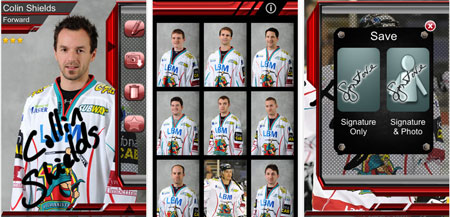http://www.materialecology.com/
Check them out….
The Internet of Things is a term used for an idea (Google it, perhaps its not an idea it is a meme) where the internet has been extended into the world of objects. A network of objects – such as household appliances is envisaged in a self configuring wireless network. Every object – a kettle, a fridge, a chair, a hairbrush has an IP address and an Operating System. It is possible to buy an App for a fridge. “Beer Chiller” may quickly chill a beer while “Fat Alarm” may sound an Alert when you reach for Oven Ready Chips. Whatever!
The Internet of Things idea/meme builds on existing technologies and draws on them to fortify its sense of achievability. Here are some of the basic building blocks:
• The idea of Apps for the Internet of Things builds on the existing model of Apps for phones.
• Self finding networking protocols such as Bonjour perhaps could serve as a model of aspects of the network for the Internet of things.
• Network aware devices already exist in the form of network cameras. Java, Linux, OSX, Android all could contribute to a small device OS.
• Other technical elements that could form the back bone of the Internet of things are Open Source, API’s, Mash ups, Multimodal Multimedia, Embedded web access in small devices.
• The Internet of things maps onto the idea of the cloud being the where the computing power is and the viewing terminals being lighter machines. Kevin Kelly in his TED presentation the next 5000 days of the internet says that “there is only one machine, the web is its OS, all screens look into the one, no bits will live outside the web, to share is to gain, let the one read it”. Kelly makes it sound a little apocalyptic but actually the cloud and thin client architecture is already in place and accepted in the form of “netbooks”, “kindles” “psp’s”, phones.
• Finally of course the idea of the “smart home” has been around for decades but its development and spread has been thwarted by multiple proprietary systems lack of compatibility and extensibility.
The challenge ahead for the Internet of things certainly has many technical elements but they are not the reason why the idea has not to date taken hold. The first challenge is one of design and imagination. The fact is that it’s a bit hard to think up things to do with the internet of things. When telephones were invented in 1870’s and the World Wide Web in the 1980’s few people could think of a widespread use for them.
It seems likely that the first wave of the Internet of things will take place around home entertainment. Already we see hooked up devices and software in iPODs, Game Consoles, TVs, Music players, Social networking. People are beginning to expect (but don’t always get) portability and compatibility between one home entertainment device and another. Expectations are also rising with regard to plugging into social networking sites. Play lists from Spotify can be shared on Facebook and played on another device in another home. Slowly, steadily, imperfectly the Internet of things is taking hold. Cooking recipes and celebrity chefs may be the source of further development (not yet seen) in the internet of things. Cooking apps in the fridge, the cooker, the press and the kitchen sink could potentially integrate with celebrity recipe apps on social networking sites accessed via phones, media frames or tablets located in the kitchen. The idea of Jamie’s fridge app does not seem particularly far fetched. Could cooking a meal be given a social reality TV twist with kitchen netcams uploading images and data streams from the users kitchen appliances?
So what is needed to make the Internet of Things happen? “Build it and they will come”. Apple have shown with the app store that if an environment is built where everyone can make money then everyone will come.
1. Compelling use cases need to be created by designers and authors.
2. Appliance manufacturers need to start putting computer systems into appliances.
3. An appliance manufacturing company needs to create an open platform that allows developers to create control apps for its range of appliances.
4. Developers need to create apps for the devices.
Chris Horn put up a link to this in his blog article shift happens
Good isnt it?
The latest from EyeSpyFX
An Appograph is a mix between an app and an autograph book.
EyeSpyFX is pleased to announce that its first Appograph product is for The Belfast Giants ice hockey team


Appographs was developed by eyeSpyFX in collaboration with Philip Wilson from Matchmedia (Internetsense)
tune wiki are a $3m venture backed startup
RT @markdurkan We need investment in Magee, local infrastructure, decentralisation and a new Investment Fund
Sinead Moore
Stacey Nash